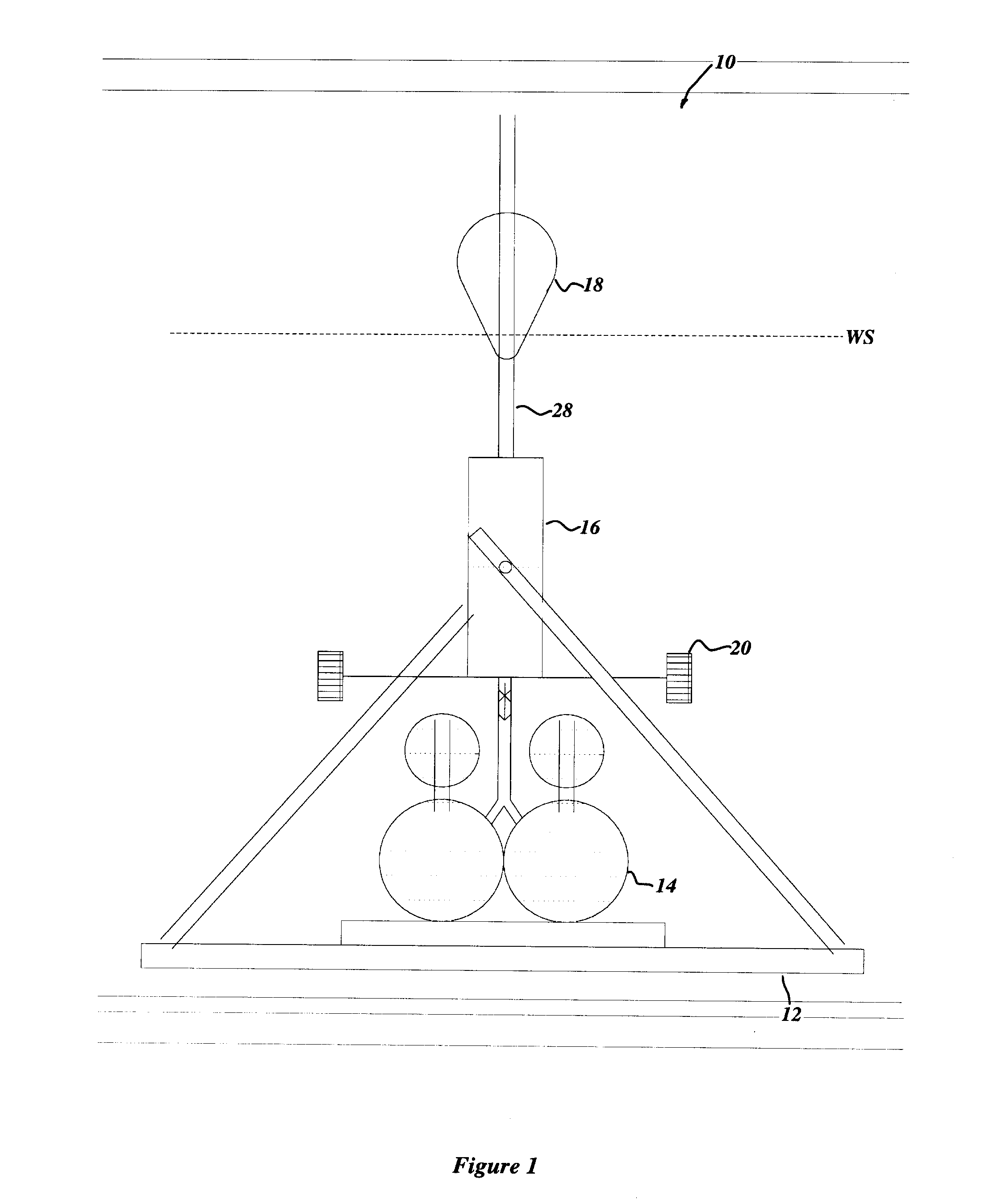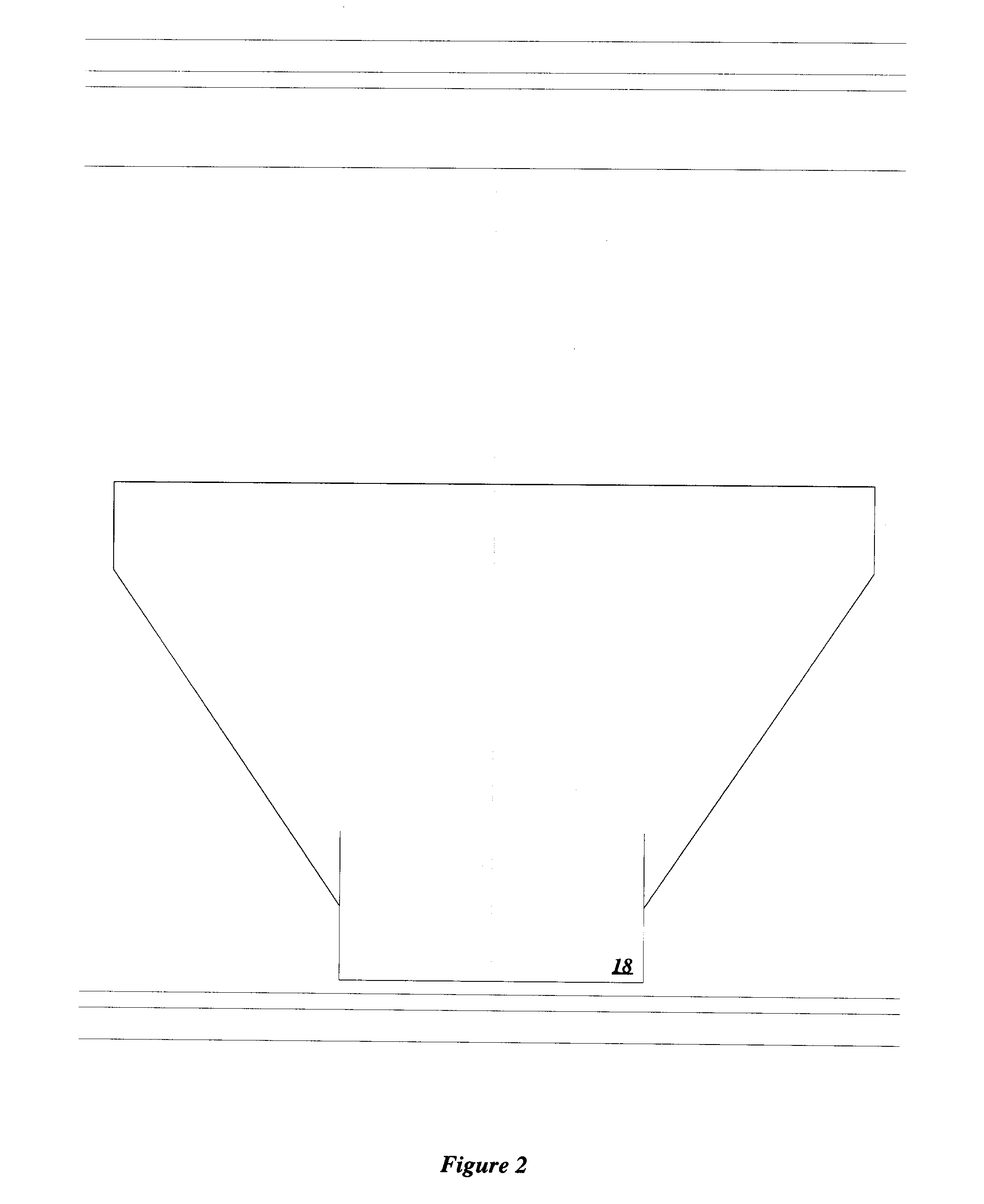Wave transduce having variable energy piston assembly
a variable energy, wave transducer technology, applied in the direction of positive displacement liquid engine, electric generator control, piston pump, etc., can solve the problem that the small wave movement is insufficient to effectively work the piston, and achieve the effect of increasing the buoyancy force acting on the piston and the stroke length, reducing the stroke length, and effective working the piston
- Summary
- Abstract
- Description
- Claims
- Application Information
AI Technical Summary
Benefits of technology
Problems solved by technology
Method used
Image
Examples
first embodiment
Energy Accumulator
[0141]FIGS. 3 and 4 show the first embodiment energy accumulator 16a—a multi-piston hydraulic embodiment. Under the urging of the float 18, the variable energy piston assembly 26a operates as follows.
[0142]For calm sea conditions, only the primary cylinder 30a′ will operate, the primary piston-head 32a′ working between the fully charged position and the 1 (a) position.
[0143]As sea conditions become somewhat more energetic and the waves incident on the float 18 have larger amplitudes, the primary piston-head 32a′ travels beyond the 1 (a) position to the 1 (b) position and a first pair of secondary piston-heads 32a″ (pair #2) is engaged by the piston rod assembly 28a and operate between the fully charged position and the 2(b) position.
[0144]The displacement of the float 18 will be such that the pressure desired is achieved in a submergence distance not to exceed (by design and choice), the distance represented by the 1(a) position. A determination of the pressure des...
second embodiment
Energy Accumulator
[0150]FIG. 5 shows the second embodiment energy accumulator 16b—a telescopic hydraulic embodiment. Under the urging of the float 18, the variable energy piston assembly 26b operates as follows.
[0151]As the amplitude of waves incident upon the float 18 increases, the float 18 will submerge to an increasing depth and its cross-sectional area at the water surface WS will increase. The float 18 may be configured such that the calculated pressure desired to operate the energy accumulator 16b will be relatively constant.
[0152]The float 18 extends the piston rod assembly 28b as it submerges. For sufficient submergence of the float 18, the piston rod assembly 28b urges the core 32b′ of the telescopic piston-head 32b to traverse the full length of the core cavity 30b′ of the telescopic cylinder 30b.
[0153]Further submergence of the float 18, with the related increased buoyant force, will cause the core 32b′ to travel further, and upon engagement with the medial interior fla...
third embodiment
Energy Accumulator
[0160]FIG. 6 shows the third embodiment of the energy accumulator 16c—an alternate telescopic hydraulic embodiment that operates quite similarly to the second embodiment energy accumulator 16b just described.
[0161]One key difference is that the telescopic cylinder 30c, being housed within the gas-filled low-resistance chamber 42c instead of the liquid filled low-pressure chamber 22b, can expand essentially freely by compressing the ambient gas instead of having to displace a substantially incompressible liquid. This arrangement removes the need for the controlled pressure-relief valve 39b.
[0162]Another key difference is that the low-pressure fluid flows by gravity feed from the low-pressure chamber 22c downward into the telescopic cylinder 30c, providing a more efficient flow.
PUM
 Login to View More
Login to View More Abstract
Description
Claims
Application Information
 Login to View More
Login to View More - R&D
- Intellectual Property
- Life Sciences
- Materials
- Tech Scout
- Unparalleled Data Quality
- Higher Quality Content
- 60% Fewer Hallucinations
Browse by: Latest US Patents, China's latest patents, Technical Efficacy Thesaurus, Application Domain, Technology Topic, Popular Technical Reports.
© 2025 PatSnap. All rights reserved.Legal|Privacy policy|Modern Slavery Act Transparency Statement|Sitemap|About US| Contact US: help@patsnap.com



